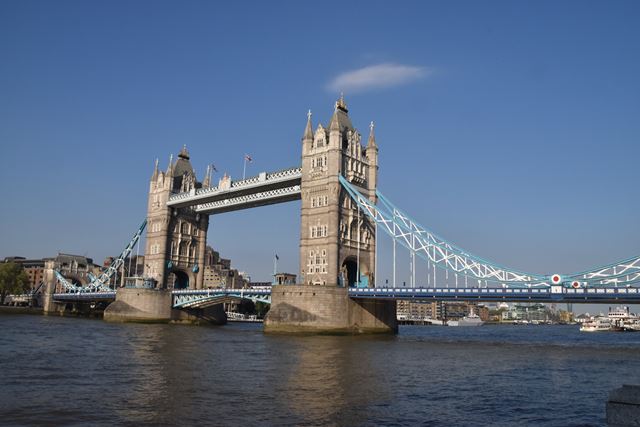Tower Bridge, London

Tower Bridge at a Glance
Tower Bridge is world-renowned due to being London's most remarkable bridge largely on account of its lifting central sections and Neo-Gothic architecture. When it first opened, it was the world's most advanced bascule bridge.
If you are keen on visiting this landmark, you might want to know a few notable facts about Tower Bridge.
15 Amazing Facts About Tower Bridge
1. More than 50 designs were considered for the bridge
The City of London Corporation hosted a contest for the design of a new bridge in order to help residents of London navigate between both sides of the Thames in 1876.
Out of over 50 designs flowed in and all were rejected until 1884 when the design by civil engineer Sir John Wolfe Barry and architect Sir Horace Jones was chosen.
2. Sir Horace Jones who designed Tower Bridge designed several of London's renowned markets
The architect responsible for Tower Bridge helped shape some of England's most iconic structures in Victorian London such as Billingsgate Market, Smithfield Market, and Leadenhall Market.
3. The 2 levered sections are known as bascules
The two sections located in the main span, called bascules, rise up to an angle of 83 degrees.
It's quite stunning when you first observe it.
4. Each levered section weigh more than 1,100 tons
Yes, they are extremely heavy.
5. A massive chamber exists beneath the bridge to help counterbalance the bascules
The Bascule Chamber is a large cavern under the bridge where counterweights are swinging to operate the bridge.
You could visit this section of the bridge with a special tour.
6. Coal burning steam engines used to power the bridge
Once, when the bridge opened, coal burning steam engines powered it, but a combination of oil and electricity replaced it in the 1970s.
7. The bridge's 2 high level walkways were built to allow pedestrians to use the bridge
Originally, these two high level walkways were made so anyone would be able to pass through when the bridge was open.
8. The walkways, falling into disrepair, turned into a red light district.
Not being used very much, the walkways consequently transformed into an unofficial red light district.
Although they were shut back in 1910, today you could visit them--now just a Tower Bridge Exhibition.
9. Tower Bridge's construction facts and figures are impressive
Tower Bridge comprises over 11,000 tons of steel and the foundations required over 70,000 tons of concrete to hold up the structure. In addition, it used more than 31 million bricks and 2 million rivets.
10. Tower Bridge opened once with a bus on it
In 1952, Albert Gunter, a bus driver, was driving a bus over the bridge and noticed something weird occurring. Tower Bridge was beginning to open, except this time with the bus still on it. Albert reacted by pushing down the accelerator to hurry across the gaping void. He succeeded in making to the other side and was even rewarded with a day off for displaying courage and fast thinking.
11. Someone parachuted off the bridge to exalt its benefits
There exists a brief film in which Thomas Orde-Lees leaps out of the bridge in 1917 prior to parachuting successfully into the River Thames underneath. His goal was to demonstrate the advantage of RAF pilots utilizing parachutes.
12. A plane flew once between the walkways and bascules
A pilot named Frank McClean was forced to fly a small biplane in between the walkways and bascules during an emergency in 1912.
13. A workforce of 432 construction workers took 8 years to make tower bridge
That time frame is rather quick considering the size of the bridge.
14. It takes just 5 minutes to bring up the bridge
This is rather extraordinary if you recall how heavy these bascules are. The bridge rises because of a combination of hydraulic pumps propelled by electricity and oil supported by heavy counterweights.
15. Ships have the right of way
As long as they provide more than a 24 hour notice to the staff operating Tower Bridge.
Everyone then has no choice but to wait for any ship to pass by. Former US President Bill Clinton had to wait for a full 20 minutes as a barge was sailing through back in 1997.